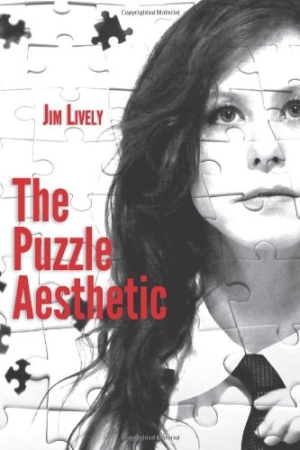The Puzzle Aesthetic
For the millions of Americans who lost their jobs and saw their severance and pension plans gutted while the CEOs whose mistakes tanked their companies got rich, Jim Lively’s The Puzzle Aesthetic will be an angry yet therapeutic read. As much a chronicle as it is an insider’s exposé of a corporate culture gone sour, Lively’s book will resonate with the host of people who, like the author, were coldly cast aside by companies to whom loyalty and dedication are a one-way street, and a dead end at that.
Lively spent “nineteen years, seven months and five days” as an in-house attorney for Unifying Data Systems (UDS), a massive international corporation based at a sprawling complex in Dallas, Texas. A company with “no shortage of demigods” whose leadership style was most often “management by intimidation,” UDS, charges Lively, routinely acted in “morally offensive” ways that were “unconscionable but legal,” especially in regard to its own employees.
Ironically, Lively was in the department that was originally established to manage and oversee employee rights and benefits, yet in his final years was tasked with finding legal loopholes to allow his bosses to rid themselves of such “liabilities” while lining their own pockets. One CEO, for example, who ordered the firing of nearly one in four employees, cut all severance packages to the minimum, regardless of years served, then walked away with a “golden parachute” worth in excess of $50 million.
Like so many workers caught in similar situations, Lively internalized and suppressed his anger and outrage, and kept his mouth shut out of fear of losing his own job. He paid a physical and emotional price for that, only to eventually be let go in a final round of firings when UDS was sold to a rival. This “close to being autobiographical” book is Lively’s act of contrition, his fictionalized cautionary tale, and his therapy. Deeply personal in tone and content, the book reads like a survivor’s recollection of a disaster, one he saw coming yet was too paralyzed to stop or even ameliorate.
The book is not “all doom and gloom,” however, as Lively notes on the back cover. The chapters where he finds the answer to the newly unemployed’s lament of “my God, what am I going to do today?” will sound familiar to millions who have gone and are going through the same situation. Lively’s accounts of his first ever midday trip to a grocery store and of being taunted at home by a bird who just will not leave him alone are fraught with the humor of the frustrated, and, as such, will likely ring true with many readers.
Although rarely exciting and not always entertaining, Lively’s writing is engaging. Less literature than a report, it is nonetheless clean, clear, and honest as opposed to self-serving.
Lively is one of a fortunate few who, after having their lives turned upside down in this economy, have managed to reinvent themselves and find a different and happier path. His subsequent journey into the world of art is depicted through photographs and paintings by the author that illustrate the book. While a digression from the main theme of the work, these final chapters provide not only hope for those who, like Lively, were betrayed but also a happy ending for his book. Many readers may take heart from Lively’s experiences, and perhaps some will be fortunate enough to echo the author’s closing remark about how “it feels so good feeling good again.”
Reviewed by
Mark McLaughlin
Disclosure: This article is not an endorsement, but a review. The publisher of this book provided free copies of the book and paid a small fee to have their book reviewed by a professional reviewer. Foreword Reviews and Clarion Reviews make no guarantee that the publisher will receive a positive review. Foreword Magazine, Inc. is disclosing this in accordance with the Federal Trade Commission’s 16 CFR, Part 255.

